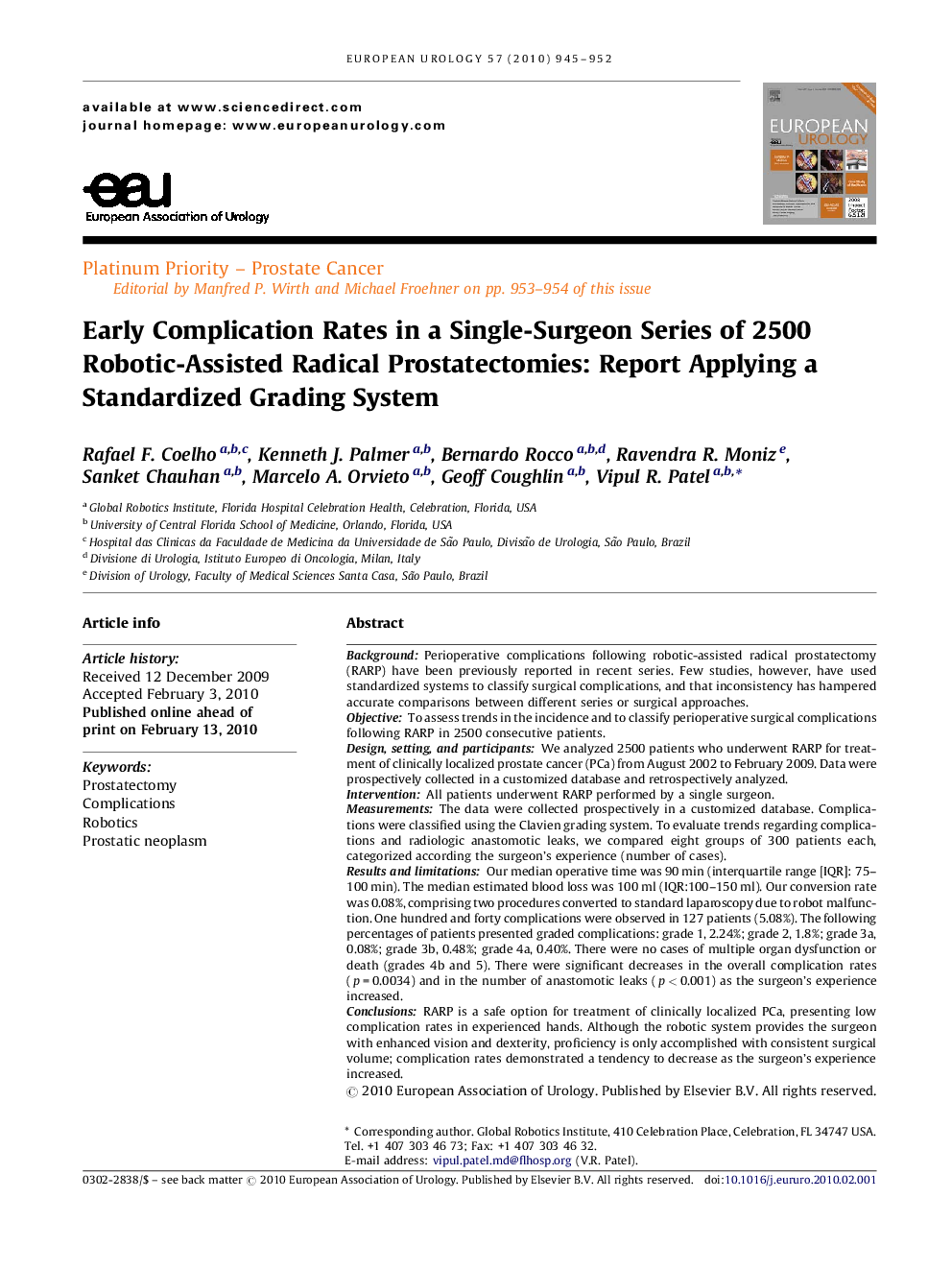| Article ID | Journal | Published Year | Pages | File Type |
|---|---|---|---|---|
| 3926465 | European Urology | 2010 | 8 Pages |
BackgroundPerioperative complications following robotic-assisted radical prostatectomy (RARP) have been previously reported in recent series. Few studies, however, have used standardized systems to classify surgical complications, and that inconsistency has hampered accurate comparisons between different series or surgical approaches.ObjectiveTo assess trends in the incidence and to classify perioperative surgical complications following RARP in 2500 consecutive patients.Design, setting, and participantsWe analyzed 2500 patients who underwent RARP for treatment of clinically localized prostate cancer (PCa) from August 2002 to February 2009. Data were prospectively collected in a customized database and retrospectively analyzed.InterventionAll patients underwent RARP performed by a single surgeon.MeasurementsThe data were collected prospectively in a customized database. Complications were classified using the Clavien grading system. To evaluate trends regarding complications and radiologic anastomotic leaks, we compared eight groups of 300 patients each, categorized according the surgeon's experience (number of cases).Results and limitationsOur median operative time was 90 min (interquartile range [IQR]: 75–100 min). The median estimated blood loss was 100 ml (IQR:100–150 ml). Our conversion rate was 0.08%, comprising two procedures converted to standard laparoscopy due to robot malfunction. One hundred and forty complications were observed in 127 patients (5.08%). The following percentages of patients presented graded complications: grade 1, 2.24%; grade 2, 1.8%; grade 3a, 0.08%; grade 3b, 0.48%; grade 4a, 0.40%. There were no cases of multiple organ dysfunction or death (grades 4b and 5). There were significant decreases in the overall complication rates (p = 0.0034) and in the number of anastomotic leaks (p < 0.001) as the surgeon's experience increased.ConclusionsRARP is a safe option for treatment of clinically localized PCa, presenting low complication rates in experienced hands. Although the robotic system provides the surgeon with enhanced vision and dexterity, proficiency is only accomplished with consistent surgical volume; complication rates demonstrated a tendency to decrease as the surgeon's experience increased.
